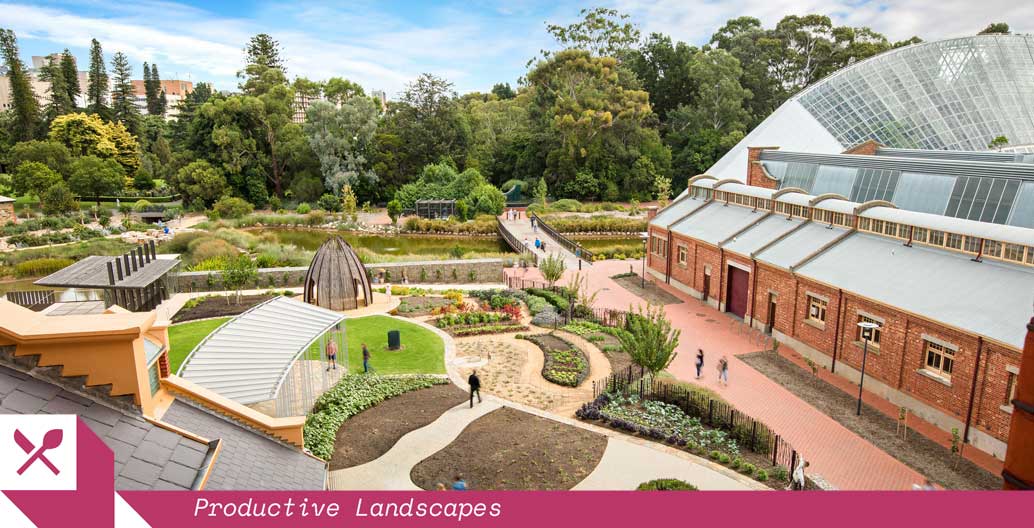
Adelaide’s Botanic Garden rediscovers its productive roots
The origins of most botanic gardens can be traced back to food, medicine and tradeable produce. A new kitchen garden in the Adelaide Botanic Garden breathes fresh life into that productive history.
Most of us instinctively support productive gardens as unassailably good. Yet they are far from easy places to conceive or design. A lot of work and practical detail is needed to ensure a landscape is effectively productive. Substantial emotional and financial investments can easily come undone without consistent, ongoing input. Long-term commitment is necessary for almost all types of productive planting, especially in public urban environments with competing programs and multi-level health and safety sensitivities. This is not always evident in civic idea forums and early student projects, where proposals for ‘community’ gardens are commonplace, yet rarely address specific details regarding their governance, let alone who should be responsible for enjoying their produce.
Luckily, this was not a problem for Adelaide-based landscape architecture practice Oxigen, as it set about designing a productive garden that had a secure client, ongoing funding, a projected program of activities and a team of coordinators. All this for a site that also needed to serve the many overlapping functions of a high-profile public garden. The result is an award-winning kitchen garden at the Adelaide Botanic Garden that is demonstrably productive. From here, the Botanic Garden runs booked-out classes for schools and pre-schools, as well as educator workshops – on growing, harvesting and preparing healthy food.
The virtues of edible gardens, however, are about more than their edible produce. They also produce opportunities for learning and for expression. They help build of a sense of community, of shared values and of leisure. And they provide varied forms of aesthetic delight: a blossoming fruit tree is a treat for the soul and the colourful fecundity of a flourishing veggie patch is stimulus to more than our hunger.
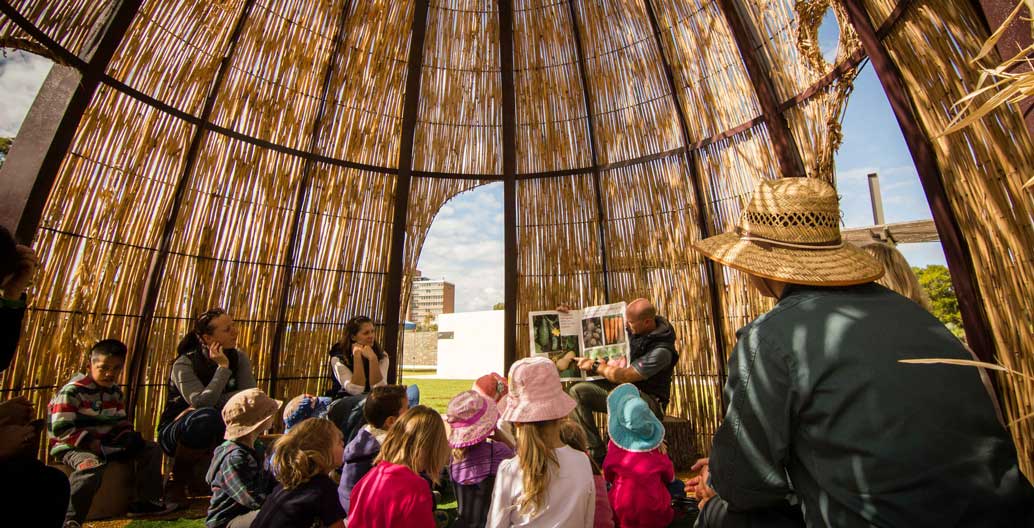
The kitchen garden's education programs run between Terms 3 and 4.
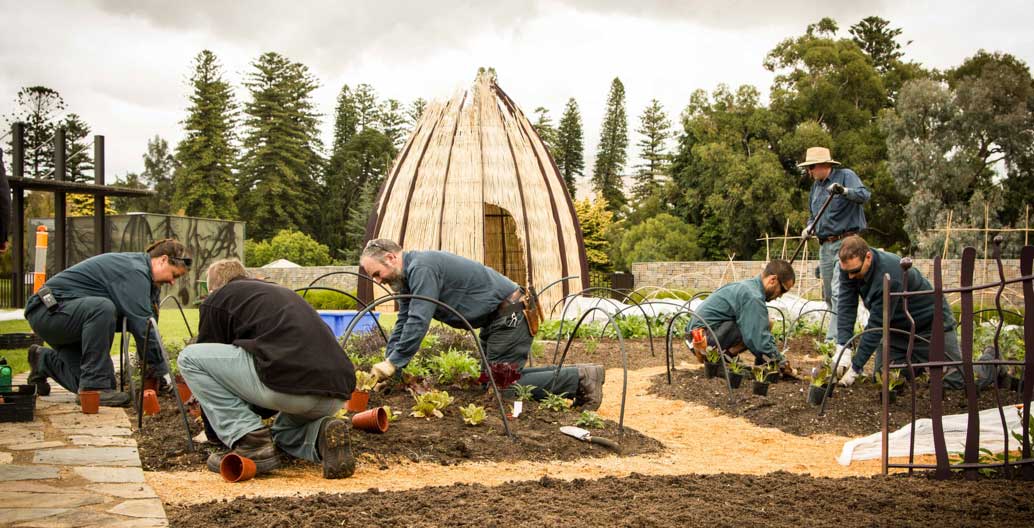
Some of the most popular produce is Amaranth, a crop from Central America and Mexico.
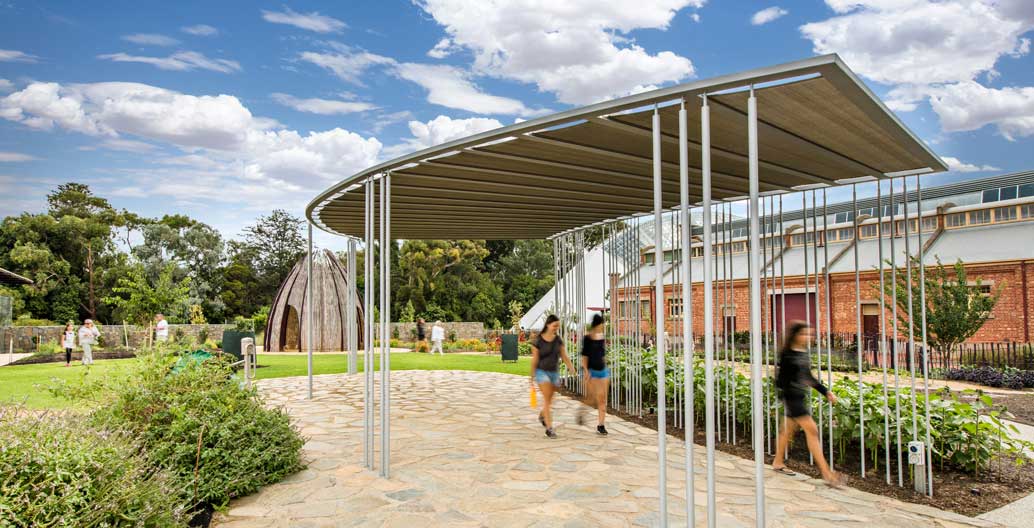
A shop supports the kitchen garden, showing kids atypical vegetables not found in supermarkets.
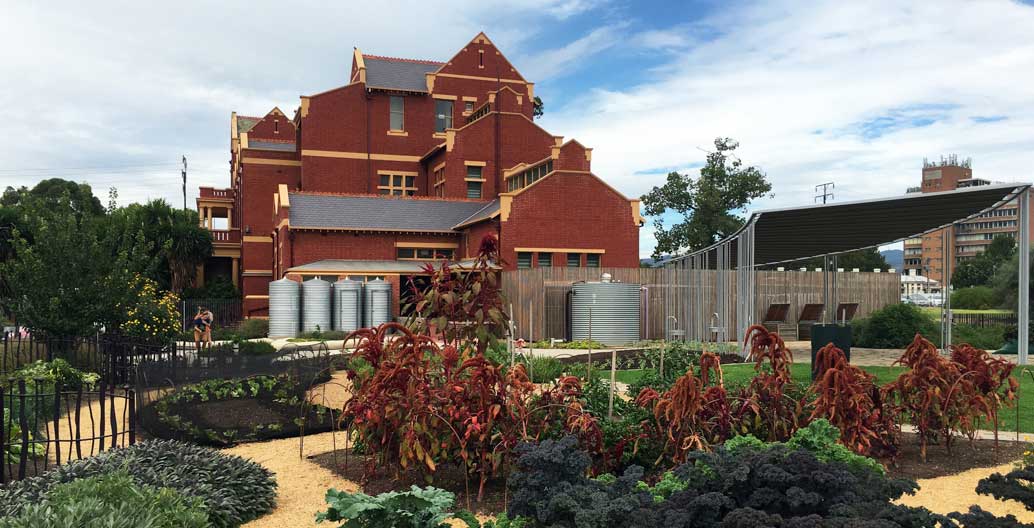
The garden forms part of a state government desire to sprout educational gardens across the state.
This multi-dimensionality is embedded in the story of botanic gardens. Evolving from the medicinal gardens of monasteries and the universities that developed from them, such as the Orto Botanico of Padova, the planting of useful species expanded to include vegetation of all sorts that might be valuable in trade for colonial empires. Adelaide Botanic Garden is home to the 19th-century Santos Museum of Economic Botany, the last of its kind in the world. It houses restored original botanic displays, including educational models of fruits and fungi, as well as later artefacts in similar cabinets of curiosity.
In addition to the commercial and educational value of economic botany and medicinally-supported health and well-being, botanic gardens came to offer respite in urban centres. Pleasure gardens were designed to delight through careful styling, aesthetic consideration of plant grouping and the sheer marvel of individual specimens. This project by Oxigen continues and revives this complex role of botanic gardens, in their varied aspects of enlightenment, education and enjoyment.
As the museum’s permanent and temporary collections show, there is more to plants, flowers, fruits and seeds than their sensorial apprehension. Oxigen’s interest in art, remembrance and interpretation of site history is evident in other projects, and serves here in the kitchen garden too, on a small, memorable scale. The support facilities for the garden include shade structures that provide for class gatherings, water tanks and BBQs, while the distinctive boundary fence supports climbing plants.
Located at the reinvigorated eastern end of the gardens, beside the extraordinary First Creek Wetlands by landscape architects Taylor Cullity Lethlean, this kitchen garden is similarly open to the general public, with a mission to support engaged education and immersive experience. Curator and horticulturalist Pip Robinson is in charge of the garden’s planning, planting and maintenance, with help from a strong team of volunteers. The seasonal program of activities with young school students is coordinated by Aaron Harrison and Karen Hogan. So far, these activities have included food classes and their, as yet modest, recipe page is part of a growing online resource that aims to develop an equally rich virtual support environment for the multi-sensorial garden experience.
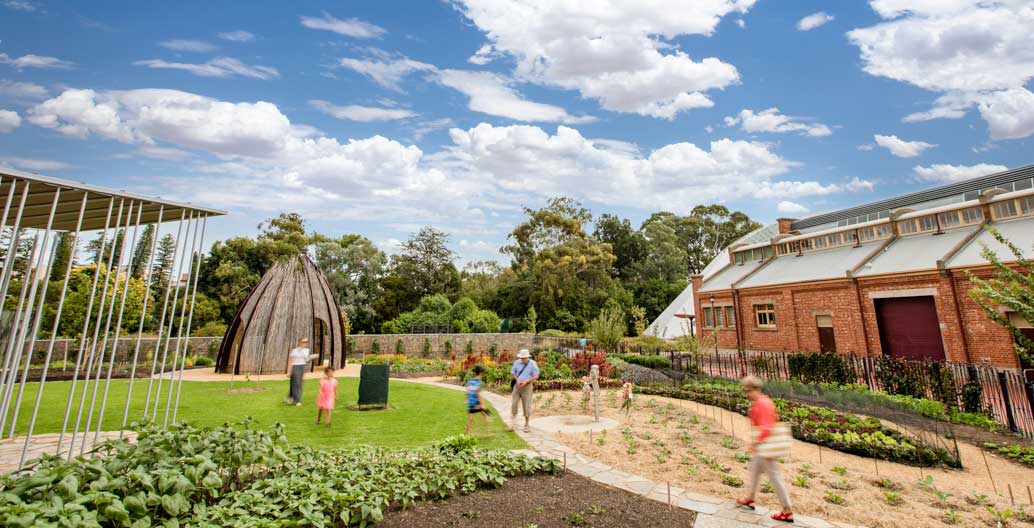
The winter crop includes the likes of beetroot, broad bean, broccoli, coriander, cabbage, celery, fennel, kohlrabi, and more.
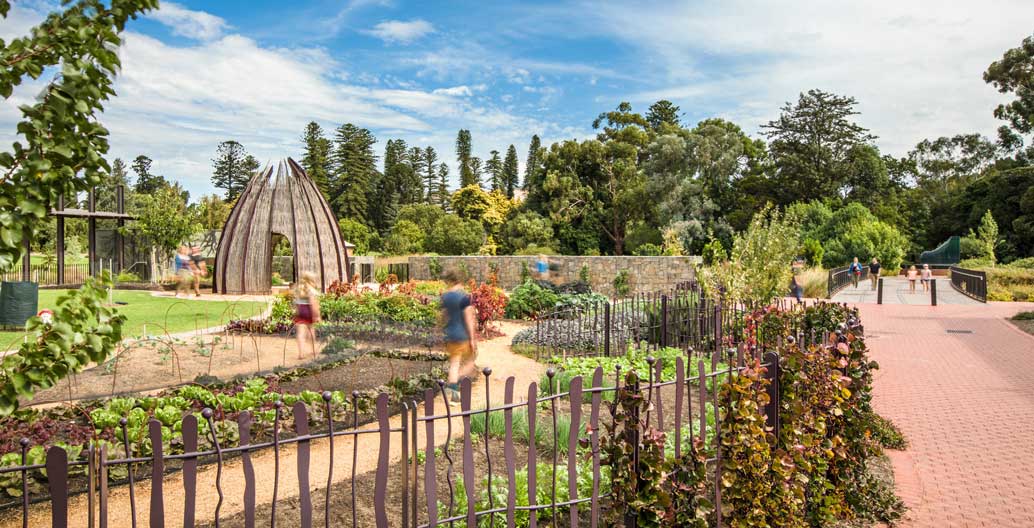
The garden features seasonal fruit, vegetables and herbs; pots and trays; structures for climbing plants; fruit trees; compost; worms; working bench spaces; and enclosed areas.
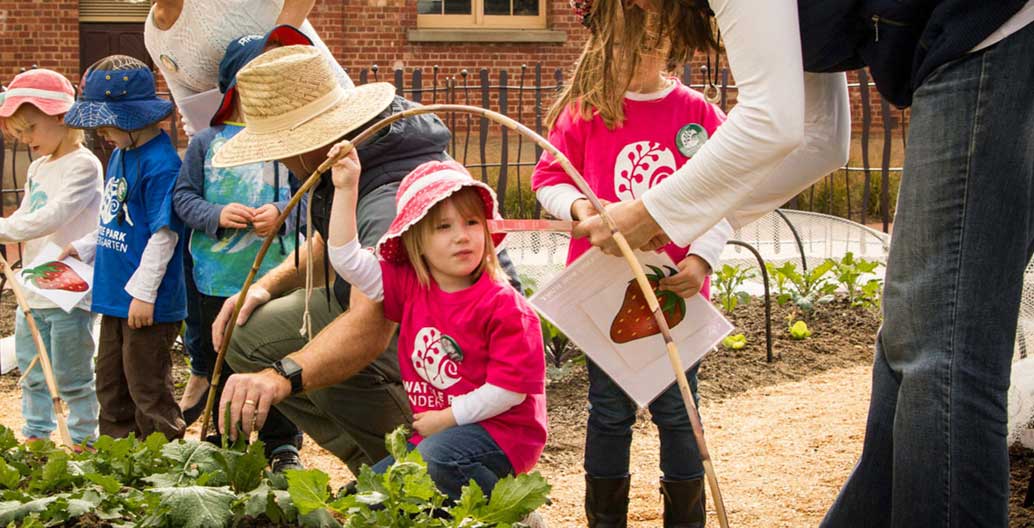
The garden came to fruition after a pledge from the SA Government in late 2014.
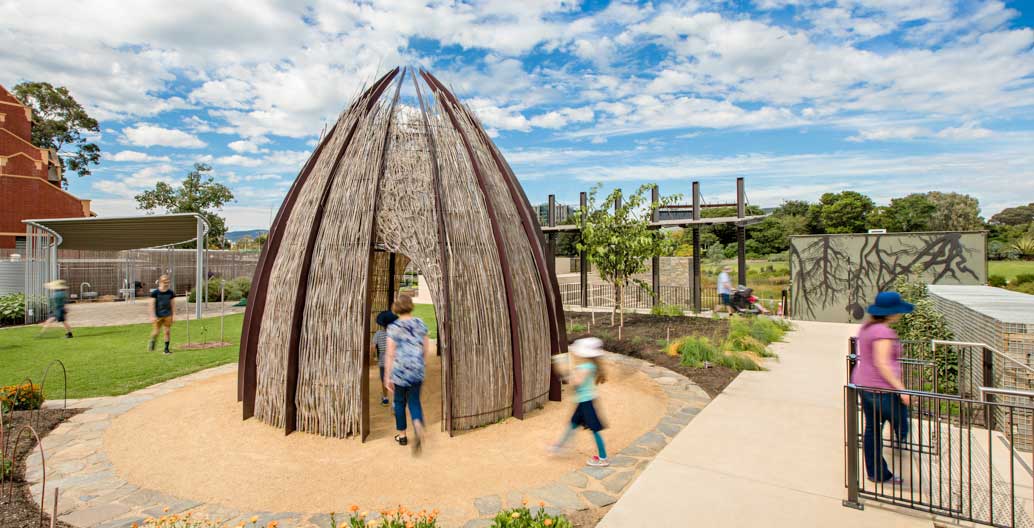
In its first year, more than 3,600 children visited the garden.
Previous Foreground stories on productive landscapes have explored nature strips and edible street gardens, apartment balcony planting and broader considerations regarding protection or reinforcement of Australia’s fertile foodbowl conditions. This rich diversity of locations for potential productive planting is also being explored in Adelaide. It is supported by active government intervention, for example through major planning reform to protect vital food and agricultural lands.
Alongside trends in productive gardens, from the private to public realms, including community-championed semi-public realms, there has been a move within Adelaide to refocus on the food and education potential of traditional spaces of public institutions, such as hospitals, museums and, not surprisingly, botanic gardens.
Even Adelaide’s celebrated, yet largely unproductive, Park Lands supports groves of olive trees that the public can harvest free of charge (subject to registration). This is an historic remnant from a time when the Park Lands were used as agricultural grounds, as much as a pleasure park. Indeed, this thought provided an argument for a reconsideration of contemporary park programs. First planted in the Park Lands in 1856 Park 7 Kuntingga and Park 8 Parngutilla contain some of the oldest olive trees in the settlement, and could supply 450 litres of oil per year.
The full title for the site of their edible garden activities is Little Sprouts Kitchen Garden, which indicates the garden’s primary audience. It was designed with education in mind, in its broadest sense: education in planting and growing, in tending and harvesting, in food diversity, in preparation and taste, in design and in health. It promotes an enjoyable exposure to plants and their propagators and to being outdoors, engaged with a living world that we would wish all children could enjoy. Adults who missed out or have forgotten this fun might rediscover much too.


